Welcome to the Deafblind People in History zine! Find more information and printable/pdf versions of the zine at the main page: violetbfox.info/deafblind.
Deafblind People in History: It’s Not Just Helen Keller!
Publication information
Title: Deafblind people in history : it’s not just Helen Keller!
Author: Violet B. Fox
Illustrations: Widi
Publication: Chicago : Violet B. Fox, January 2023
Summary: Frequently asked questions about deafblindness and short biographies about twelve historical deafblind people.
Subject and genre terms: LCSH Deafblind people–Biography, LCGFT Zines
Available online in accessible format at violetbfox.info/deafblind
Dedicated to the memory of David Philip Norris (1983-2023)
Disclaimer
Ok, up front: I’m a sighted, hearing person. I don’t personally know anyone who’s deafblind. I’m slowly but surely working on addressing my internalized ableism and addressing systemic ableism, along with other forms of oppression. For me, that means educating myself, along with finding small ways to bring disability issues to the forefront. I’ve been an active Wikipedian editor for a while now, and a few years ago I noticed a significant gap in Wikipedia articles about deaf, blind, and deafblind people, which I’ve worked to repair by writing dozens of Wikipedia biographies.
In early 2021, a TikTok meme popped up where people expressed their disbelief that a deafblind person like Helen Keller could have accomplished all that she did. Highlighting the achievements of other deafblind people seems like a good way to address that ignorance.
All the people I write about in this zine are dead; living deafblind people can speak for themselves! I’d encourage you to follow deafblind people on social media and check out their writings. I’ve created a list of suggestions at the end of this zine.
Why a zine?
Zines are a great way of sharing information with a different audience than can be reached online. I’m sharing what I’ve learned by writing Wikipedia articles in this zine, which I hope will be shared beyond the handful of people who will read those Wikipedia articles.
Zines generally are not an accessible format for blind people, which is why I’m also making the zine available for free through my website at violetbfox.info/deafblind, where it can be read by screen readers.
In print format, I’m using some best practices for low vision or other print-disabled readers, including using a sans-serif font, using a lot of white space for good contrast, and reducing decorative/extraneous graphics to make for a less cluttered reading experience.
What does it mean to be deafblind?
We can look at deafblindness both as a medical condition and as a cultural identity. Many people who use the identity deafblind are not entirely deaf or entirely blind. They may have some amount of hearing or vision, but they have enough sensory deficit that it impairs their day-to-day lives.
A common form of deafblindness is caused by Usher Syndrome, a genetic condition which has multiple types but usually consists of a child being born deaf or hard of hearing, then gradually losing their sight as a young adult or adult. People with Usher Syndrome may grow up with sign language, then adapt to using tactile sign language as they lose their sight.
Many older people who have lost much of their sight and hearing but spent most of their lives sighted and hearing will not use the identity deafblind. Some deafblind people use the convention used by many Deaf people of capitalizing DeafBlind when referring to people who are culturally DeafBlind.
How do deafblind people communicate?
There’s a variety of ways for deafblind people to communicate, depending on their background and level of sensory loss. There are multiple forms of tactile signing (also called manual signing). Tactile signing can include techniques like drawing capital letter shapes on the palm of the hand to spell out words. It can also refer to “hand over hand” signing, which is often used by people who grew up deaf and using sign, where the recipient places their hands lightly over the back of the hands of the person signing. If a deafblind person knows braille, they can communicate using a smartphone or keyboard, which will convert the text to braille on a refreshable braille display.
New forms of communication for deafblind people have emerged over the past few decades, including protactile.
What is protactile?
Protactile was developed by deafblind women in Seattle who were frustrated that they couldn’t communicate with each other without interpreters. It’s an emerging language that uses touch as its primary form of communication. Protactile takes many cues from American Sign Language (ASL) but places signs on the recipient’s body (mostly the recipient’s arms, back, and upper legs) instead of within the airspace around the interpreter. For example, several rapid taps on the thigh with all four fingers would indicate “yes,” where a rapid back and forth brushing movement with the fingers would indicate “no.”
Where sighted people rely on facial expressions and hearing people rely on tone of voice, protactile uses touch and movement of the hands on the other person’s body to communicate contextual information. For instance, a protactile interpreter would let a deafblind person they’re interpreting for know that someone had entered the room they’re in, and that they were scowling, or walking towards them. A protactile interpreter might let a deafblind presenter know that people in their audience are looking puzzled by drawing the shape of a question mark on their shoulder, or that the audience is laughing by drumming fingers rapidly on their back.
Because deaf-oriented sign language incorporates information not delivered by the hands (like facial expressions), deafblind users of tactile signing can miss out on a lot of information. For example, DeafBlind poet John Lee Clark tells the story of learning about the September 11th attacks from his interpreter, who used ASL to tell Clark about a plane flying into a building. Because traditional signing interpreters are not trained to provide context, Clark assumed a small plane had mistakenly flown into a building and he went about his day, not realizing the impact of the news story until he got online later that evening. Other deafblind people had similar stories from that day.
A protactile interpreter, on the other hand, would have provided that context for a deafblind person, letting them know that people around them were upset or preoccupied, and that television sets around them were blaring with breaking news broadcasts. The interpretation would’ve given the deafblind person enough information to realize “oh, this is a big deal.”
How do deafblind people read?
For people with some vision or hearing, large print books or audiobooks (talking books) can be options. Braille is also used to read published works. Braille knowledge is becoming endangered because more blind people are relying on audiobooks and voice technology to access information on the Internet—an option not available to many deafblind people. (Fewer than 10% of the legally blind people in the U.S. can read braille.)
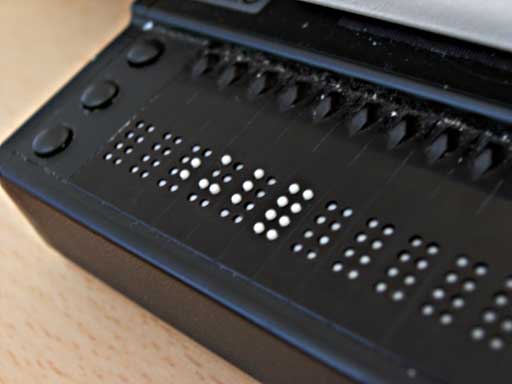
What should I do when I meet a deafblind person?
Here’s some tips from the National Center on Deaf-Blindness and the New Jersey Commission for the Blind and Visually Impaired:
- Treat a person who is deafblind as you would treat anyone else. Always be natural, never patronizing in your words and your actions.
- Let the person who is deafblind know when you enter or leave the room. Always say who you are.
- Connect via interactions: when a person attempts to communicate, respond to that person. Recognize they want to share something, give it your full attention, and respond in kind.
- Respect differences: each deafblind person is unique!
Do you know the manual alphabet in your local sign language? That’s a great place to start learning!
Interesting deafblind people throughout history
Tani Sanzan (1802-1867)
A Japanese scholar who lost his hearing in his teen years and became blind as an older adult. He was appointed as a Confucian vassal by the lord of the Takatori domain and opened his own school. Sanzan was a respected author of zuihitsu, a form of contemplative personal essay. His writings focused on promoting respect for the emperor and rejection of Western foreigners. Sanzan lost his eyesight towards the end of his life, though he continued to teach by having students write characters on his palm.
Morrison Heady (1829-1915)
An American author who was blinded in an early childhood accident and lost his hearing gradually. He collected donations to fund libraries of raised print books. Heady would tell stories to the children in his Kentucky town. Friends encouraged him to write and publish his stories; he wrote several books of poetry and juvenile fiction. Heady was also a tinkerer. He invented a hydraulic machine for raising water from wells, a steam-powered embossing press, a self-opening gate, a swivel chair, and a thermos to keep coffee warm.

Another of Heady’s inventions was the “diplograph,” a typewriter that with the flip of a switch would type in one of three different embossed scripts used by blind people at the time: Boston line letter, New York Point, or braille.
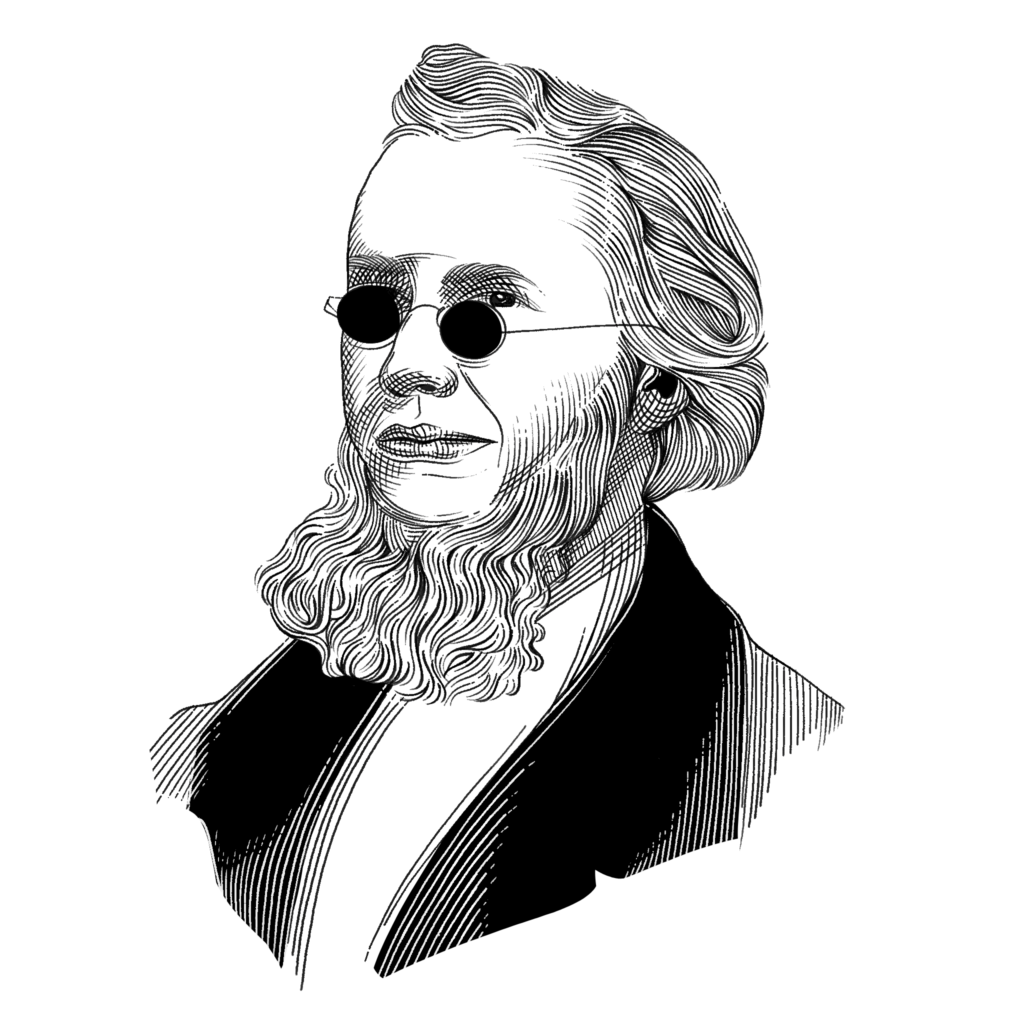
Roger O’Kelly (1880-1962)
The first African American deafblind lawyer. O’Kelly became blind at age nine due to scarlet fever. Although he regained sight in one eye, he gradually lost his hearing after the fever. In 1898, he applied to Gallaudet (the only college in the world dedicated to accommodating deaf students) but was denied as Gallaudet would not accept Black students until the 1960s. O’Kelly earned a bachelor of laws degree from Yale in 1912 and ran a successful practice within the Black community in Raleigh, North Carolina.
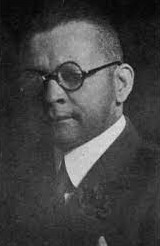
Marie Heurtin (1885-1921)
A French educator who was born deafblind, as were several of her siblings. Heurtin learned no language until she was ten years old, but learned to sign, read, and write with the help of nuns at a convent near Poitiers. When her sister and other deafblind girls came to the convent, she taught them to read Braille and to play games like dominos. Her success (along with other deafblind people like Laura Bridgman and Helen Keller) convinced Western educators that it was worthwhile teaching deafblind children, even those who had been deafblind from birth. A 2014 French biopic (titled Marie Heurtin, or Marie’s Story in English markets) tells the story of her relationship with the nun who taught her, Sister Sainte-Marguerite.
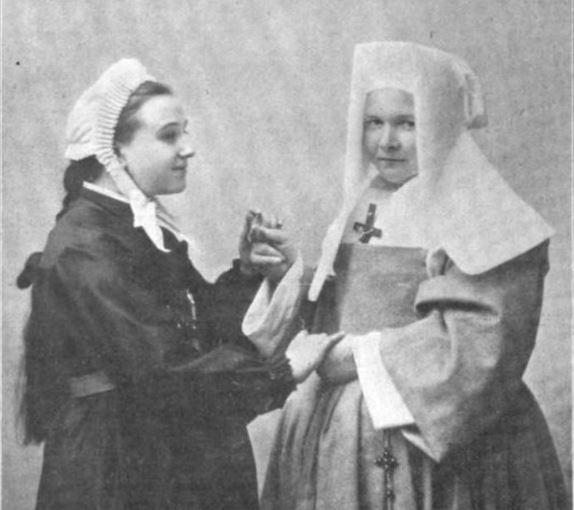
James Hanlon (1908-1961)
An Irish surgeon who lost his sight when he caught an infection from a patient, then lost his hearing when doctors used high dosages of the new antibiotic streptomycin to try to treat that infection. His wife took care of their four children while he readjusted to deafblind life, then resolved to go back to medical school to study physical therapy. A secretary attended lectures with Hanlon, translating through tactile sign language and taking notes to be converted to braille.
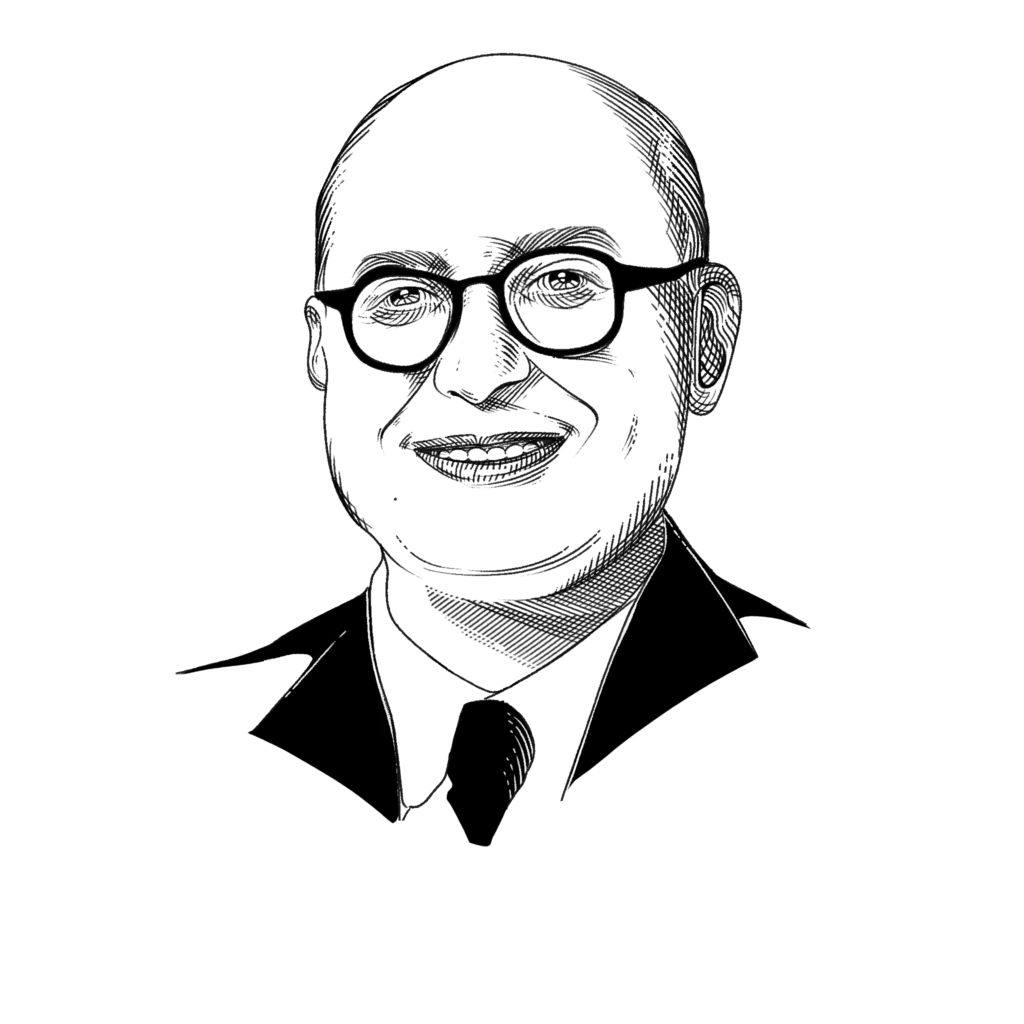
Hanlon treated polio patients; he could diagnose the condition through careful attention to early signs of polio, such as the vibration of a slightly dragging foot. Either his wife or his secretary would translate patients’ questions through tactile signing. He visited the U.S. to raise money for a new polio clinic and appeared on The Ed Sullivan Show. He also impressed onlookers by doing tandem diving with his friend, an Olympic diver, who would tap Hanlon as they were about to enter the water.
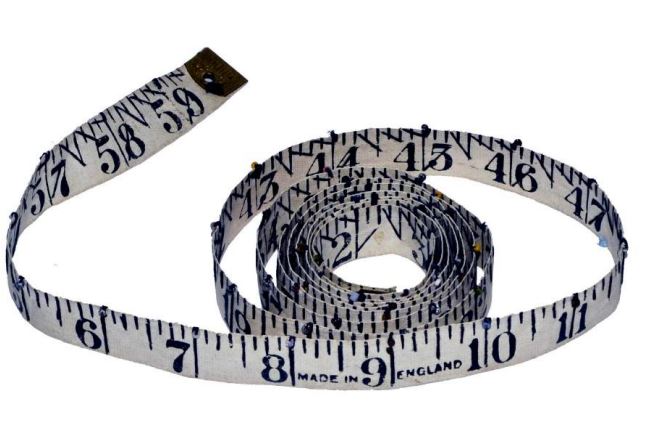
I visited a small museum in Dublin and randomly stumbled upon a case with Hanlon’s tape measure and braille watch. I was so excited to explain to my spouse how cool this guy was!
Olga Skorokhodova (1911-1982)
A Russian scientist who lost her vision and most of her hearing at age five after being ill with meningitis. In 1947 she wrote the first edition of a book titled How I Perceive, Imagine and Understand the World Around Me, describing how her sense of touch, smell, vibration, temperature, and taste provided information about her surroundings. In her memoir, Skorokhodova writes of her love of literature and poetry, characterizing “reading as the only means of salvation for a multiply handicapped person such as myself.” She was a research fellow in deafblind education at the Institute for the Handicapped for the Academy of Educational Sciences of the USSR.
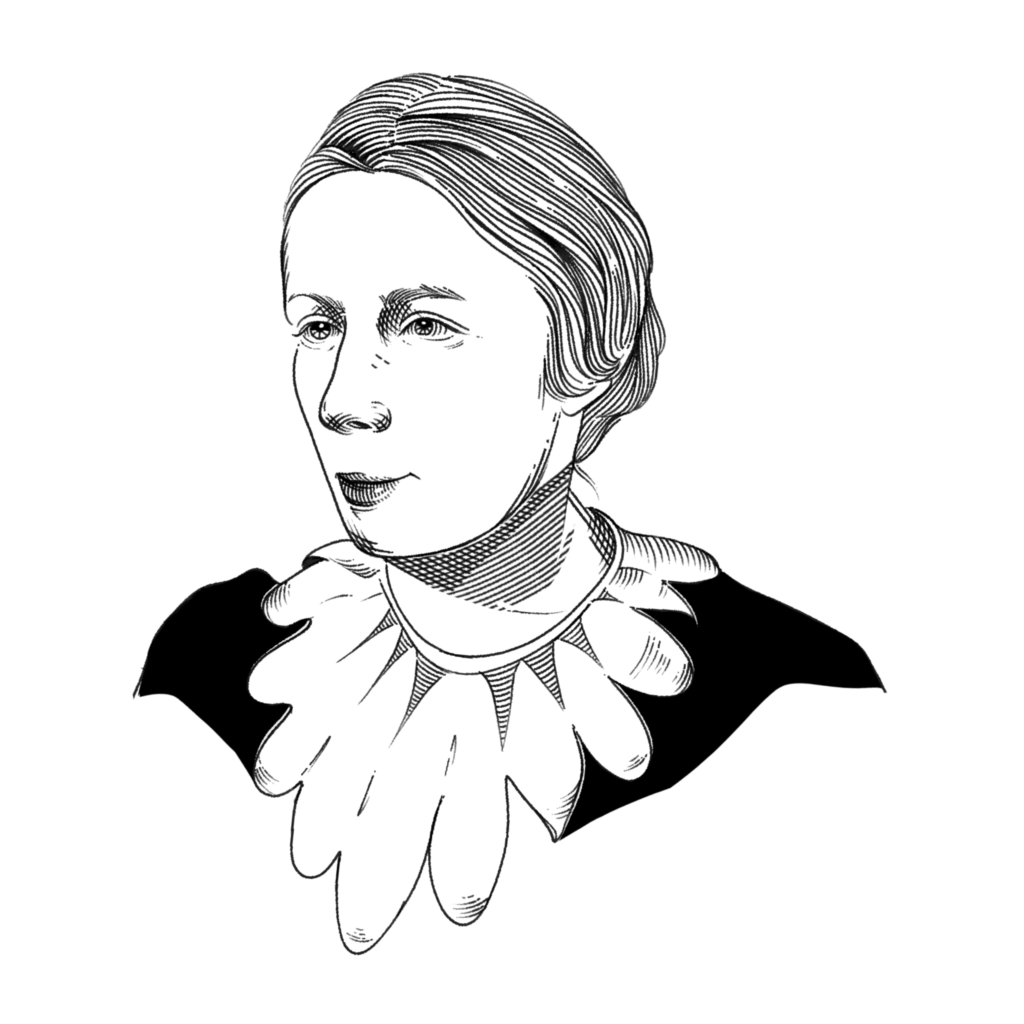
Excerpt from Skorokhodova’s book:
When the deaf, dumb, and blind describe sensations, perceptions and concepts in the language of sighted people, one should always bear in mind that their perceptions are received through different sense organs although they are described in the words of people who see and hear. When a sighted person sees a cow from a distance he says: ’I am looking at the cow, it is piebald, and it has large beautiful eyes.’ A blind person’s description of that cow would be couched in the same words as those used by sighted people, but if he were to describe his immediate sensations and perceptions, he would say the following: ’I have looked at the cow with my hands. It has a smooth, soft coat, I felt its legs and head and found the horns. They felt very hard to the touch.’
Gerrit van der Mey (1914–2002)
A Dutch mathematician who was blinded at age four due to meningitis. He was studying for his doctoral degree in mathematics when he contracted meningitis again and lost his hearing. He needed to relearn to walk with the help of a guide dog, but he finished his Ph.D. on the theory of algebraic curves two years later. He began working as a computer programmer in 1951. Mey wrote large parts of the code and operating systems for some of the first electronic computers designed in the Netherlands. He also created compilers for later systems.
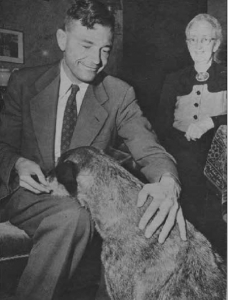
Geraldine Lawhorn (1916–2016)
An American author and actress who lost most of her sight by age 12 and her hearing by age 19. Lawhorn was the first deafblind African American woman to graduate from college when she earned a bachelor’s degree from Northeastern Illinois University at age 67. She starred in her own one-woman show in New York City titled Projected Hearts. Lawhorn wrote novels and short stories and an autobiography, On Different Roads, and won multiple writing contests. She used many devices to help her live independently after her mother died, like kitchen utensils that had braille markings. She also learned to read braille music notation and studied piano technique at the New York College of Music.
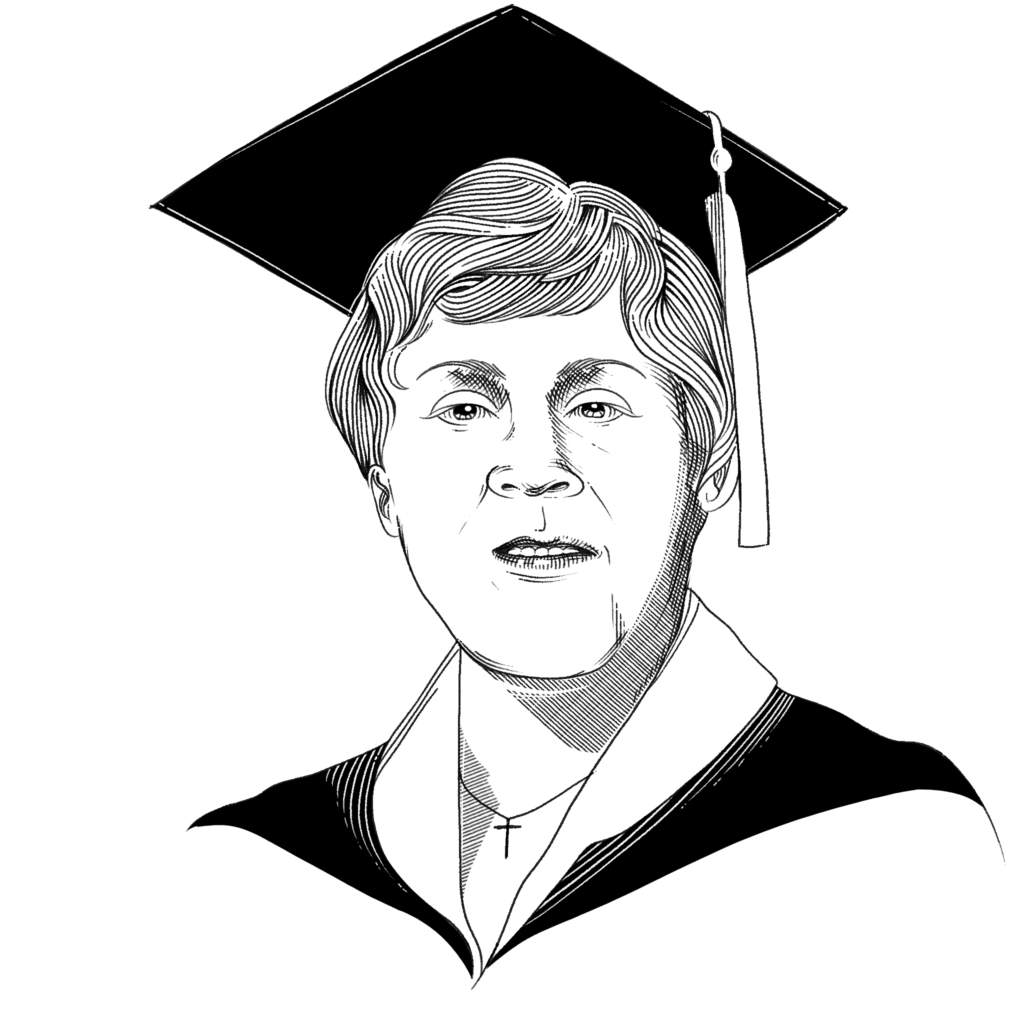
Georgia Griffith (1931-2005)
An American deafblind educator and online community pioneer. Griffith was blind from birth and was a music educator, but her career was curtailed when she started losing her hearing as an adult. She started working for the National Library for the Blind in the 1970s, becoming known as the preeminent authority in the U.S. on braille music. In the 1980s, she used a refreshable braille display and a screen reader to become an early adopter of the Internet. She worked for CompuServe as a database manager/information specialist, managing multiple message forums, becoming known as a ‘Net Queen’.
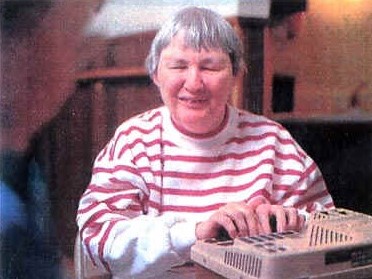
Theresa Poh Lin Chan (1943-2016)
A Singaporean writer and teacher who was deaf and blind by the time she was sixteen. Chan attended Perkins School for the Blind in Massachusetts, where she learned to dance, ice skate, knit, and ride horseback. She returned to Singapore in 1973 to take care of her aging parents and became a teacher at the Singapore School for the Blind. She was the subject of a 1964 BBC radio documentary, “Child of the Silent Night” and was an actor in a 2005 Singaporean film based on her life, “Be with Me,” which was based on her writings.
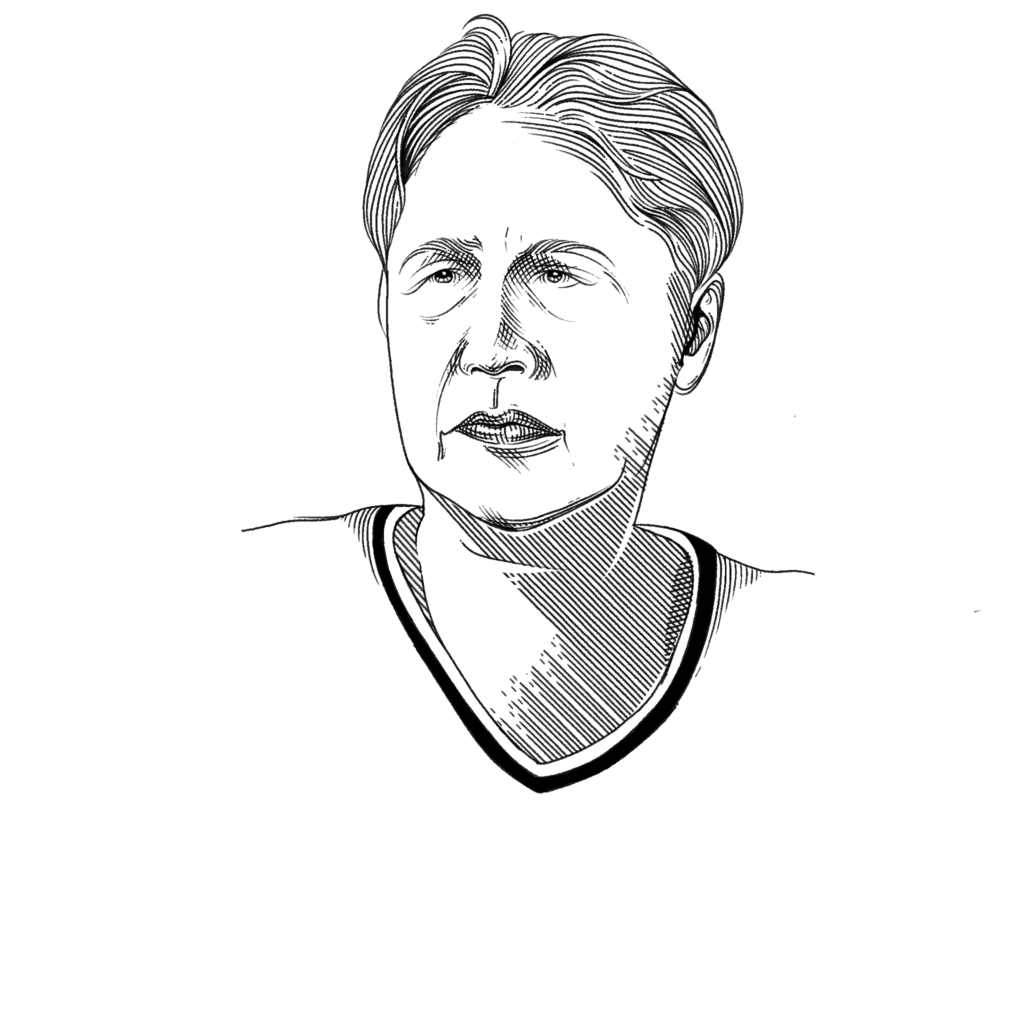
Vasile Adamescu (1944-2018)
A Romanian educator who became deafblind at age two after contracting meningitis. Adamescu taught at the Special High School for the Blind in Cluj-Napoca for decades, prioritizing the education of children with sensory deficiencies. In his retirement, he became a consultant for disabled children and educators, served on a disability nonprofit organization board, and ran free pottery workshops for the blind and deaf. He wrote his three-volume autobiography Înfruntând viața (Facing Life) in Braille. Adamescu was awarded the Romanian National Order of Merit in 2013.
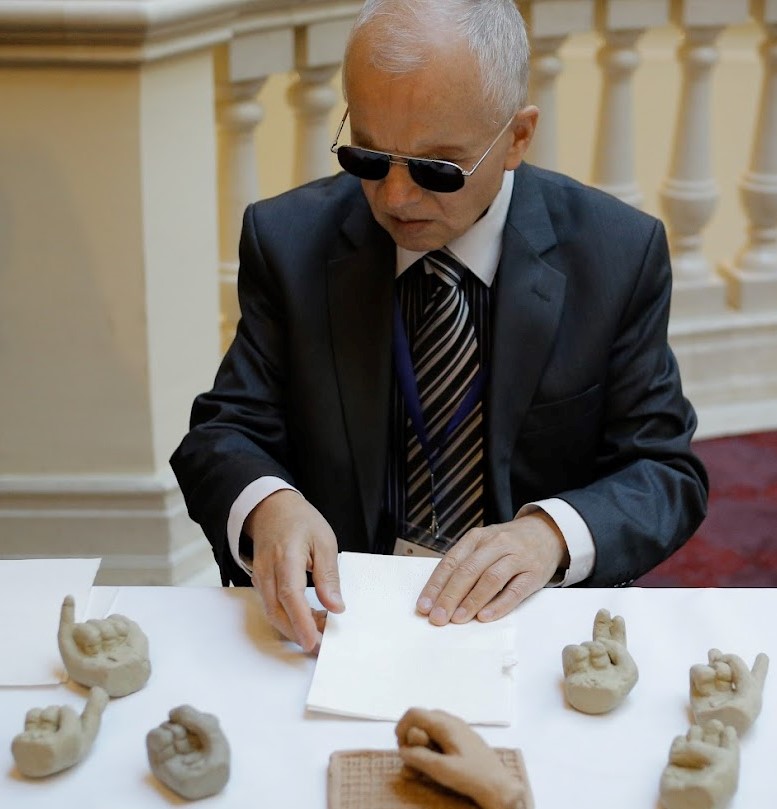
Helen Keller (1880-1968)
Look, I’m not actually going to write the biography of Helen Keller here, there’s just so much stuff already available about her. Helen Keller was extremely cool: she was able to accomplish extraordinary things, and was a socialist to boot. But many deafblind people have said that constantly being compared to Helen Keller is a real drag. I hope that reading this zine inspires you to pick up a book or watch a video featuring their own words!
Deafblind people you should follow on social media
- John Lee Clark (poet and protactile advocate)
- Elsa Sjunneson (author and editor)
- Haben Girma (human rights lawyer)
- Rebecca Alexander (extreme athlete)
- Cristina Hartmann (author)
- Alexandra Elaine Adams (medical student)
- Steven McCoy (journalist)
- Molly Watt (accessibility consultant)
Additional resources
- Where I Stand: On the Signing Community and My DeafBlind Experience by John Lee Clark (2014)
- Haben: The Deafblind Woman Who Conquered Harvard Law by Haben Girma (2019)
- “DeafBlind Communities May Be Creating a New Language of Touch” by Andrew Leland in The New Yorker (May 2022)
- “Who Is ‘Worthy’? Deaf-Blind People Fear That Doctors Won’t Save Them from the Coronavirus” by Robin Wright in The New Yorker (April 2020)
- Being Seen: One Deafblind Woman’s Fight to End Ableism by Elsa Sjunneson (2021)
Braille
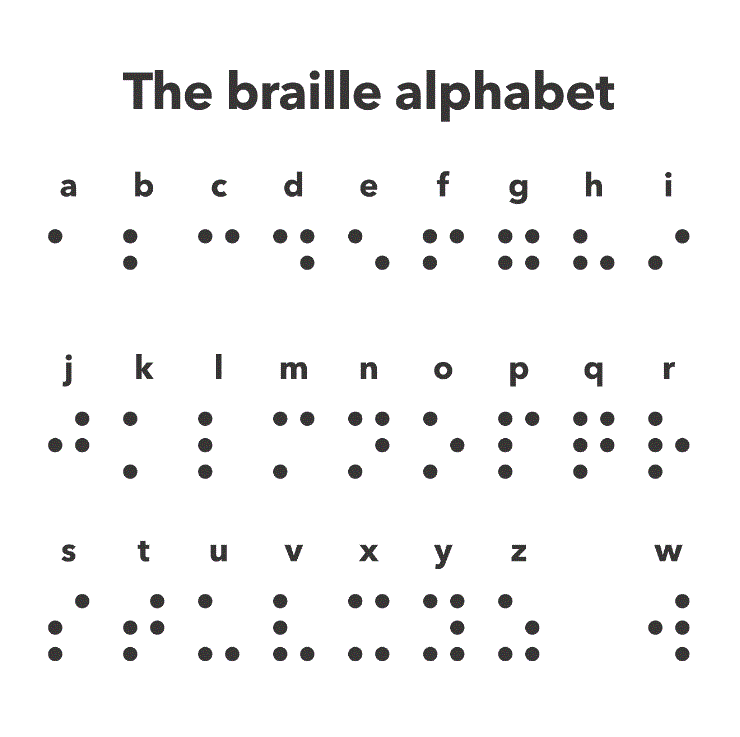
Braille is more complex than the above graphic shows: there’s contractions for speedier reading, special math notation, music braille, and a series of attempts to unify braille among different languages. If you like to learn about patterns and codes, you’ll love learning about the history of Braille. Why doesn’t “W” doesn’t fit the established pattern? I’m out of room—you’ll need to research it yourself! ☺
